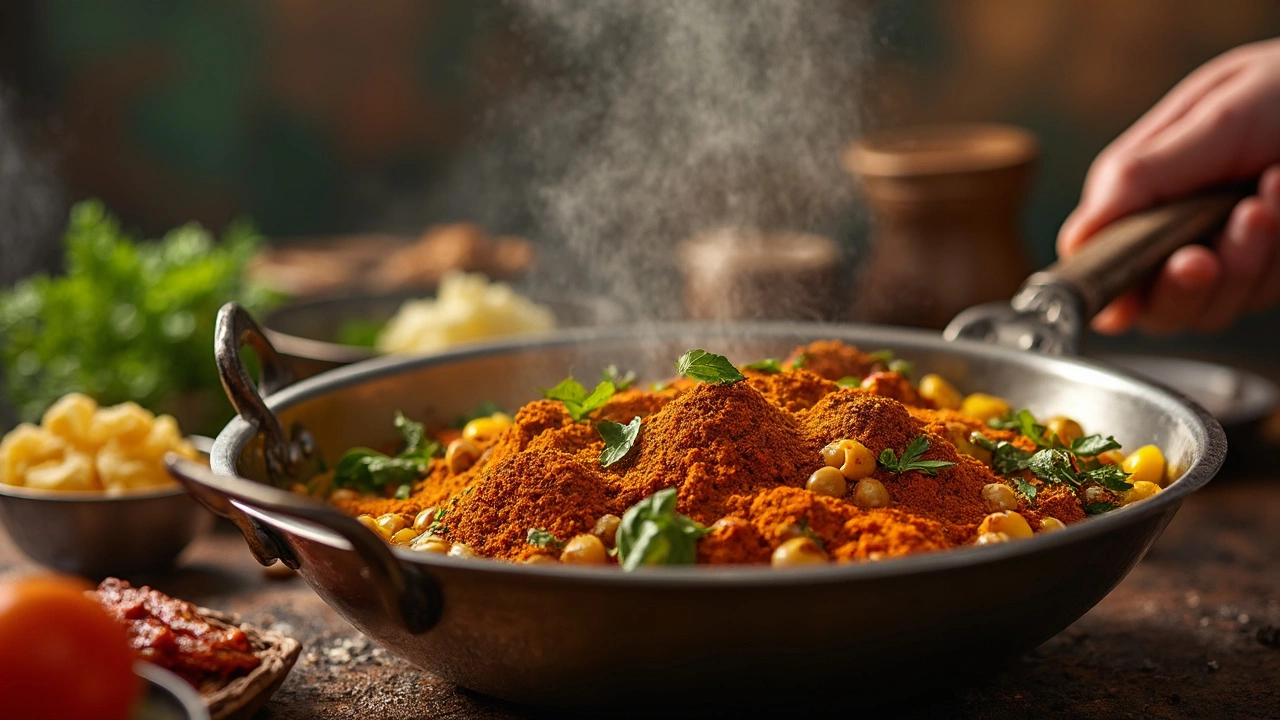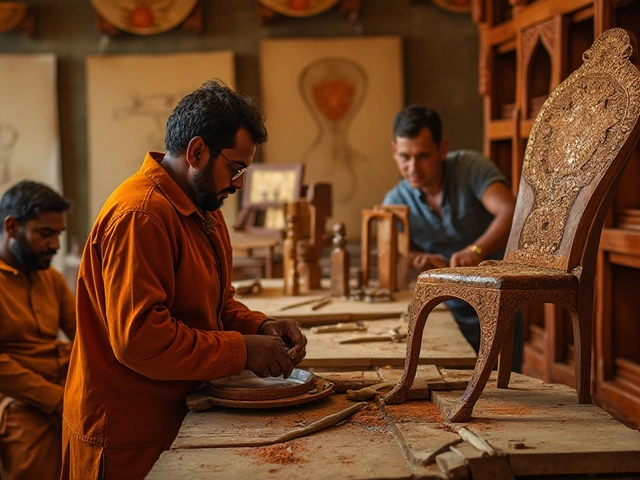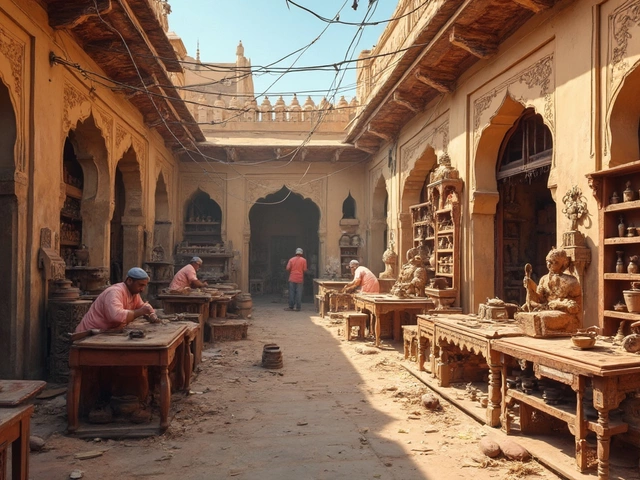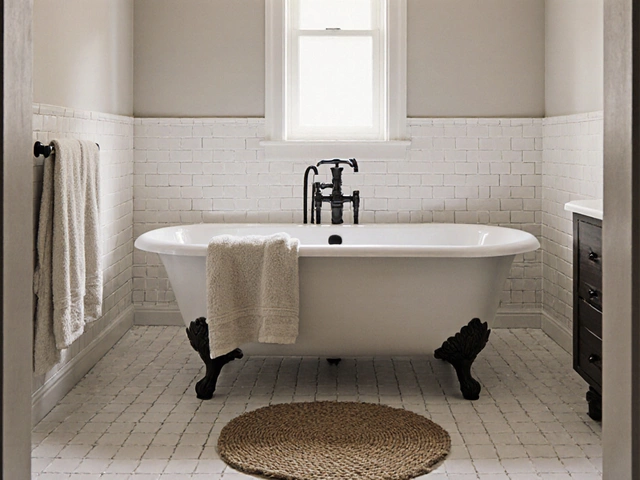
Ever stood in a kitchenware aisle and wondered why some pans look deeper than the Marianas Trench while others barely dip? Well, you're not alone! The world of pans is surprisingly varied and figuring out what qualifies a pan as 'deep' can be a bit puzzling. But don't worry, we'll crack it open together.
A deep pan usually refers to any cookware that offers extra volume, perfect for recipes needing more space for sautéing or simmering. Whether it’s a skillet, a sauté pan, or a pot, depth helps you handle larger quantities or liquids without spills. Familiar terms like a 'Dutch oven' or 'stew pot' often mean we're talking deep.
Picking your perfect pan isn’t just about size. It’s about finding the right fit for what you’re cooking and how you cook it. If you're constantly cooking up hearty stews or baking big batches, knowing your deep pans becomes a game-changer. Ready to dive into the world where depth truly matters? Let’s get cooking!
- What Makes a Pan 'Deep'?
- Types of Deep Pans
- The Most Popular Names for Deep Pans
- Choosing the Right Deep Pan for Your Kitchen
- Deep Pan vs. Other Cookware
- Tips to Maximize Your Deep Pan Use
What Makes a Pan 'Deep'?
Ever seen those cookware pieces that seem capable of holding the contents of an entire fridge? That's the allure of the deep pan. But what exactly defines its depth?
The main factors that make a pan 'deep' are its height relative to its width. A skillet, for instance, might be labeled as 'deep' if its sides are much higher than on your typical pan. Usually, deep pans sit at a height of about 2 inches or more, offering plenty of room for creative dishes.
Depth matters when you're cooking meals that require space for liquids or large quantities of ingredients, like soups, sauces, or risottos. It also makes it easier to prevent splatter, which is perfect if you’re juggling a dish that can boil over or make a mess.
- Deep skillet: A wider base means it's great for browning meats or making one-pan meals without spills.
- Stockpots: Taller than standard pots, these are designed for making big batches of broth or stew.
- Sauté pans: They offer depth for tossing ingredients without losing them overboard.
Choosing the deepest pan isn’t always best—consider what you'll be cooking. The right depth helps distribute heat more evenly, ensuring your delicious creations are cooked just right. It's about balance. Got nothing but pancakes on your menu? Save the deep pan for another day!
Types of Deep Pans
When it comes to deep pans, it's not just one-size-fits-all. They come in various forms, each with its own unique purpose and design. Let’s break down some of the most common and useful types you might encounter in your kitchen escapades.
1. Dutch Ovens: These heavy, usually cast-iron pots are a kitchen staple. Known for their excellent heat retention and even cooking, they're perfect for slow-cooking stews, roasts, or even baking bread. A Dutch oven's depth allows you to cook large meals with ease.
2. Saute Pans: Think of a sauté pan as a hybrid between a skillet and a pot. With its deep sides and straight edges, it’s great for cooking sauces, shallow frying, or one-pan meals. Its depth helps control splattering while giving you ample space to stir without spilling.
3. Stock Pots: When you hear ‘deep,’ think stock pots. These are tall and narrow, usually used for making large quantities of broth, soup, or boiling pasta. Thanks to their depth, they efficiently handle big volumes of liquid, essential for those batch-cooking days.
4. Casserole Dishes: Often found in rectangular or oval shapes, casserole dishes come relatively deep. They are ideal for baking layered dishes like lasagna or casseroles, allowing for even cooking throughout.
5. Deep Skillets: These marry the features of a frying pan with extra depth. Perfect for braising meat or making stir-fry, deep skillets often feature non-stick surfaces making them easy to clean after frying.
| Type of Deep Pan | Ideal Use |
|---|---|
| Dutch Oven | Stews, baking, roasting |
| Sauté Pan | Sauces, shallow frying |
| Stock Pot | Broths, soups, large quantities |
| Casserole Dish | Baked pasta, layered dishes |
| Deep Skillet | Braising, stir-fry, frying |
Understanding the different types of deep pans can revolutionize your cooking game. Once you know what each type is best for, you’ll pretty much have the right tool for every recipe. Whether you’re a meal prep enthusiast or just love to experiment, choosing the right deep pan turns kitchen time into culinary magic!
The Most Popular Names for Deep Pans
When you're exploring the world of kitchenware, you'll bump into a bunch of names for deep pans that might catch you off guard. So, how about we break down these common names so the next time you're in a store or surfing online, you know exactly what you're looking at?
First up, let's talk about the Dutch Oven. These bad boys are like the royalty of deep pans, known for their thick walls and excellent heat retention. They're perfect for hearty meals like stews or roasting meats.
Next, there's the stockpot. If you're making chili for the big game night or need to boil a whole bunch of spaghetti, this is your go-to. Stockpots have high sides to keep everything contained, no splashes here.
And then there's the sauté pan. While it might look like a regular frying pan, a sauté pan has higher sides which make it awesome for stir-fries or shallow frying without worrying about spills.
Don’t forget the handy casserole dish. Whether it’s glass, ceramic, or metal, its deeper design lets you layer and bake to your heart's content, making it ideal for lasagnas or deep-dish pies.
Adding a little variety, you might stumble upon a Braiser. It’s sort of a mix between a sauté pan and a Dutch oven, usually with a wider base, letting you sear and then slowly cook meat or veggies.
Here’s a quick glance at the common names and where you might use them:
| Type | Best For |
|---|---|
| Dutch Oven | Stews, Roasting |
| Stockpot | Soups, Boiling Pasta |
| Sauté Pan | Stir-Fires, Frying |
| Casserole Dish | Baking, Layered Dishes |
| Braiser | Searing, Slow Cooking |
These names might sound a bit old-school, but knowing them makes a huge difference when you're trying to whip up something delicious. Each type is designed with a specific cooking method in mind, ensuring you get the right outcome every time. So next time you reach for a deep pan, you’ll know exactly what to call it and why it's perfect for your dish!

Choosing the Right Deep Pan for Your Kitchen
Picking out a deep pan isn’t just about grabbing the first one that catches your eye. The right choice depends on your cooking style, the kind of meals you love to whip up, and even your kitchen's size. Let’s make sure you find your perfect match!
First up, think about the material. Would stainless steel, with its durability and heat retention, best suit your needs? Or perhaps non-stick Teflon appeals more because of its easy cleaning feature? If you’re all about flavor, consider cast iron, which is stellar for slow-cooked dishes.
Kitchenware size matters, especially the depth. If you’re often entertaining or have a big family, a larger pan might be ideal. Otherwise, don’t overdo it—sometimes a medium-sized one fits right even for just two people.
Now, consider handles. It might sound trivial, but when juggling a hot, heavy pan filled with delicious steaming stew, good, sturdy handles are lifesavers. Look for ones that are riveted and heat-resistant.
- Budget: There’s a wide range, from $20 basic models to $300 professional-grade options. Know what you need and how much you’re willing to invest.
- Stovetop Compatibility: Not all pans love every type of stove. Induction-compatible cookware is a must if that's the surface you use.
- Lid or Not: Pans with well-fitted lids help keep moisture and flavors locked in. Opt for a glass lid if you like peeking while cooking.
While picking out the right pan might seem minor in the grand scheme of cooking adventures, making a thoughtful choice can totally upgrade your kitchen game. So take your time, and enjoy the process of finding one that makes you excited to cook!
Deep Pan vs. Other Cookware
When you're peering into your kitchen cabinet, it can sometimes feel like your pans are playing a practical joke on you. Do they really all serve different purposes? Let's unravel the mystery starting with the deep pan and how it compares to other types of cookware.
A deep pan might look quite similar to a few other kitchen staples, but there are key differences. The main thing is its depth—which makes it great for recipes needing more liquid or volume. Compared to a regular fry pan, a deep pan can handle a larger volume, making it perfect for stews, soups, or even frying food without splattering.
Now, contrast this with a skillet, which is generally shallow and designed for quick frying and browning. Skillets are great when you need things to heat fast and evenly, but you'll want a deep pan if you're cooking something that might simmer or stew for a while.
If you've heard of a sauté pan, it's kind of like the deep pan's cousin. It often has higher sides than a skillet and a lid, meaning it hangs out in that middle ground, capable of searing and simmering alike.
Let’s put the comparison into a quick snapshot to make it clear:
| Cookware | Depth | Best For |
|---|---|---|
| Deep Pan | High | Simmering, stews, deep frying |
| Skillet | Shallow | Fast frying, browning |
| Sauté Pan | Medium | Searing, sautéing, complex dishes |
So, what's the takeaway? Each pan has its vibe, and knowing what they excel at helps you choose the right partner for your culinary adventures. The next time you're pulling out cookware, you’ll know exactly why the humble deep pan might just be your best buddy.
Tips to Maximize Your Deep Pan Use
So you've got yourself a deep pan—awesome choice! But are you getting the most out of it? This humble piece of cookware is more versatile than you might think. Let’s dive into some handy tips to make sure your deep pan is earning its keep in your kitchen.
First off, always match the size of the pan to your cooking need. Going too small can mean overcrowding, which impacts cooking time and evenness. On the other hand, choosing a pan that's too large wastes energy and can lead to uneven heat distribution. A rule of thumb? Have a couple of sizes handy to switch things up based on your dish.
Secondly, remember that when you're working with a deep pan, you need to wait a touch longer for heating. Patience, my friend, gets consistent results. Once it’s warm, it retains heat well, perfect for making dishes that need slow, steady cooking.
"Investing in a quality deep pan is like finding a reliable kitchen partner," says chef and food writer, John Newman. "It makes cooking a pleasure, not a chore."
Consider investing in a lid, if your particular pan didn’t come with one. A lid traps moisture and heat, speeding up your cooking while keeping flavors sealed in. This is especially handy for soups, stews, or any dish with a liquid component.
To prevent sticky situations, always maintain a good coating of oil or butter. Preheating the pan with a generous swirl of oil ensures food doesn’t cling stubbornly to your beloved cookware.
- Don’t forget about safety: Longer handles and deeper vessels require a bit more caution. Always use oven mitts when handling.
- Experiment: Your deep pan isn't just for frying. Try baking bread, roasting nuts, or even making a deep-dish pizza. You'd be surprised at the possibilities.
If you really want to geek out and compare brands or types of pans, some studies even chart their performance. Here’s a quick look at common materials used in deep pans:
| Material | Ease of Use | Heat Distribution | Durability |
|---|---|---|---|
| Cast Iron | Moderate | Excellent | Very High |
| Stainless Steel | High | Good | High |
| Non-stick | Very High | Good | Moderate |
So next time you reach for your trusty deep pan, remember these tips to make each cooking session tasty and efficient. It's all about knowing what your deep pan can do, and letting it be the hero of your kitchen adventures!




